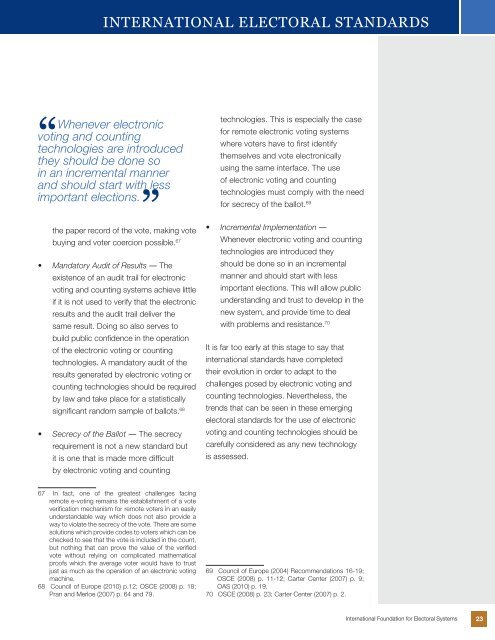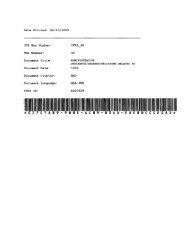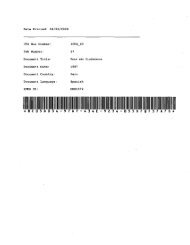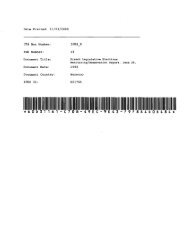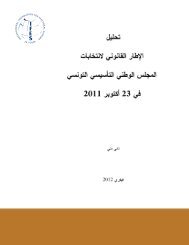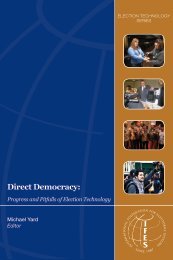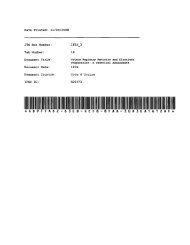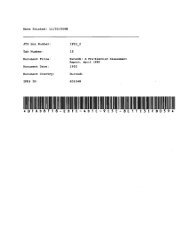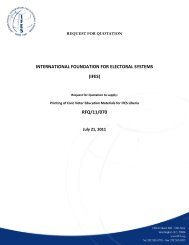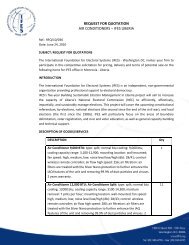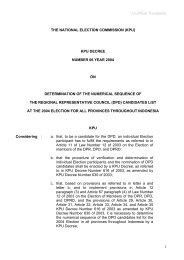Electronic Voting & Counting Technologies - IFES
Electronic Voting & Counting Technologies - IFES
Electronic Voting & Counting Technologies - IFES
- No tags were found...
You also want an ePaper? Increase the reach of your titles
YUMPU automatically turns print PDFs into web optimized ePapers that Google loves.
INTERNATIONAL ELECTORAL STANDARDS“Whenever electronicvoting and countingtechnologies are introducedthey should be done soin an incremental mannerand should start with lessimportant elections.”the paper record of the vote, making votebuying and voter coercion possible. 67• Mandatory Audit of Results — Theexistence of an audit trail for electronicvoting and counting systems achieve littleif it is not used to verify that the electronicresults and the audit trail deliver thesame result. Doing so also serves tobuild public confidence in the operationof the electronic voting or countingtechnologies. A mandatory audit of theresults generated by electronic voting orcounting technologies should be requiredby law and take place for a statisticallysignificant random sample of ballots. 68• Secrecy of the Ballot — The secrecyrequirement is not a new standard butit is one that is made more difficultby electronic voting and countingtechnologies. This is especially the casefor remote electronic voting systemswhere voters have to first identifythemselves and vote electronicallyusing the same interface. The useof electronic voting and countingtechnologies must comply with the needfor secrecy of the ballot. 69• Incremental Implementation —Whenever electronic voting and countingtechnologies are introduced theyshould be done so in an incrementalmanner and should start with lessimportant elections. This will allow publicunderstanding and trust to develop in thenew system, and provide time to dealwith problems and resistance. 70It is far too early at this stage to say thatinternational standards have completedtheir evolution in order to adapt to thechallenges posed by electronic voting andcounting technologies. Nevertheless, thetrends that can be seen in these emergingelectoral standards for the use of electronicvoting and counting technologies should becarefully considered as any new technologyis assessed.67 In fact, one of the greatest challenges facingremote e-voting remains the establishment of a voteverification mechanism for remote voters in an easilyunderstandable way which does not also provide away to violate the secrecy of the vote. There are somesolutions which provide codes to voters which can bechecked to see that the vote is included in the count,but nothing that can prove the value of the verifiedvote without relying on complicated mathematicalproofs which the average voter would have to trustjust as much as the operation of an electronic votingmachine.68 Council of Europe (2010) p.12; OSCE (2008) p. 18;Pran and Merloe (2007) p. 64 and 79.69 Council of Europe (2004) Recommendations 16-19;OSCE (2008) p. 11-12; Carter Center (2007) p. 9;OAS (2010) p. 19.70 OSCE (2008) p. 23; Carter Center (2007) p. 2.International Foundation for Electoral Systems 23


